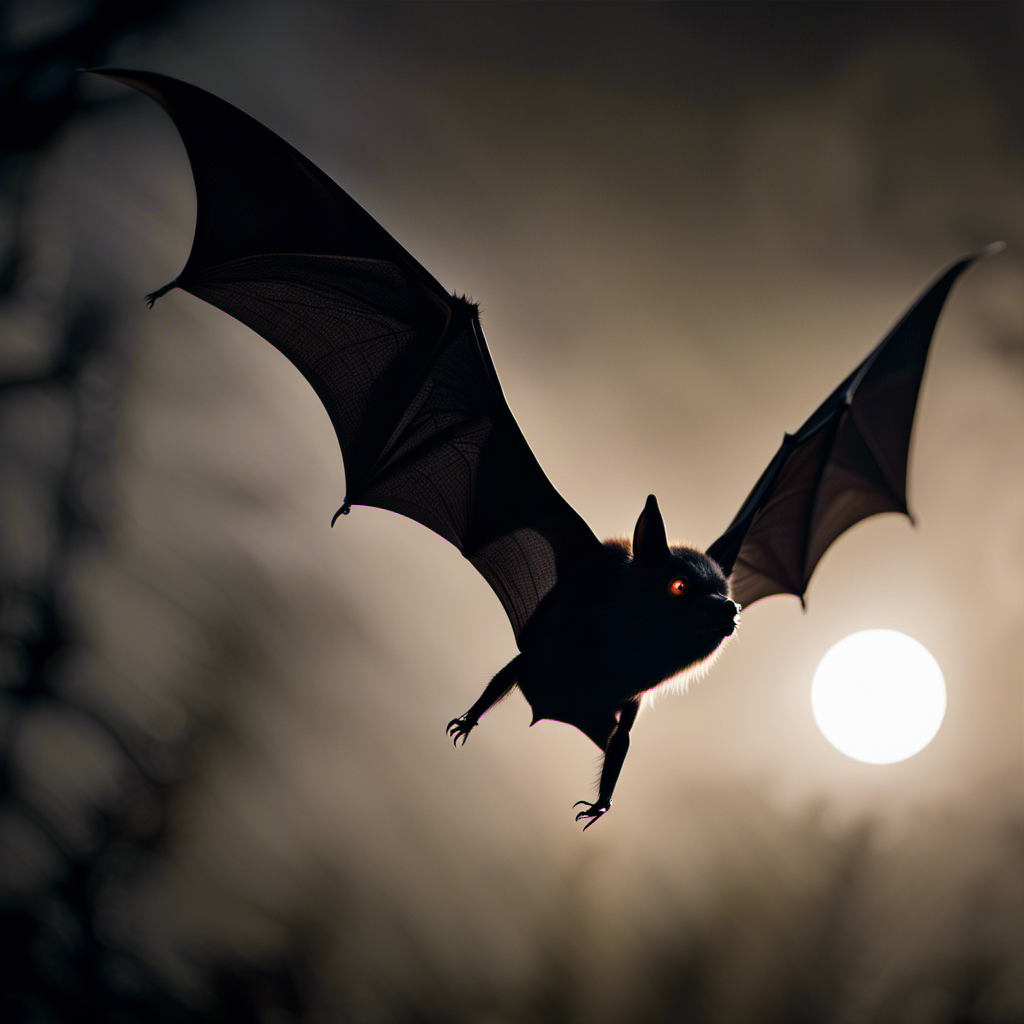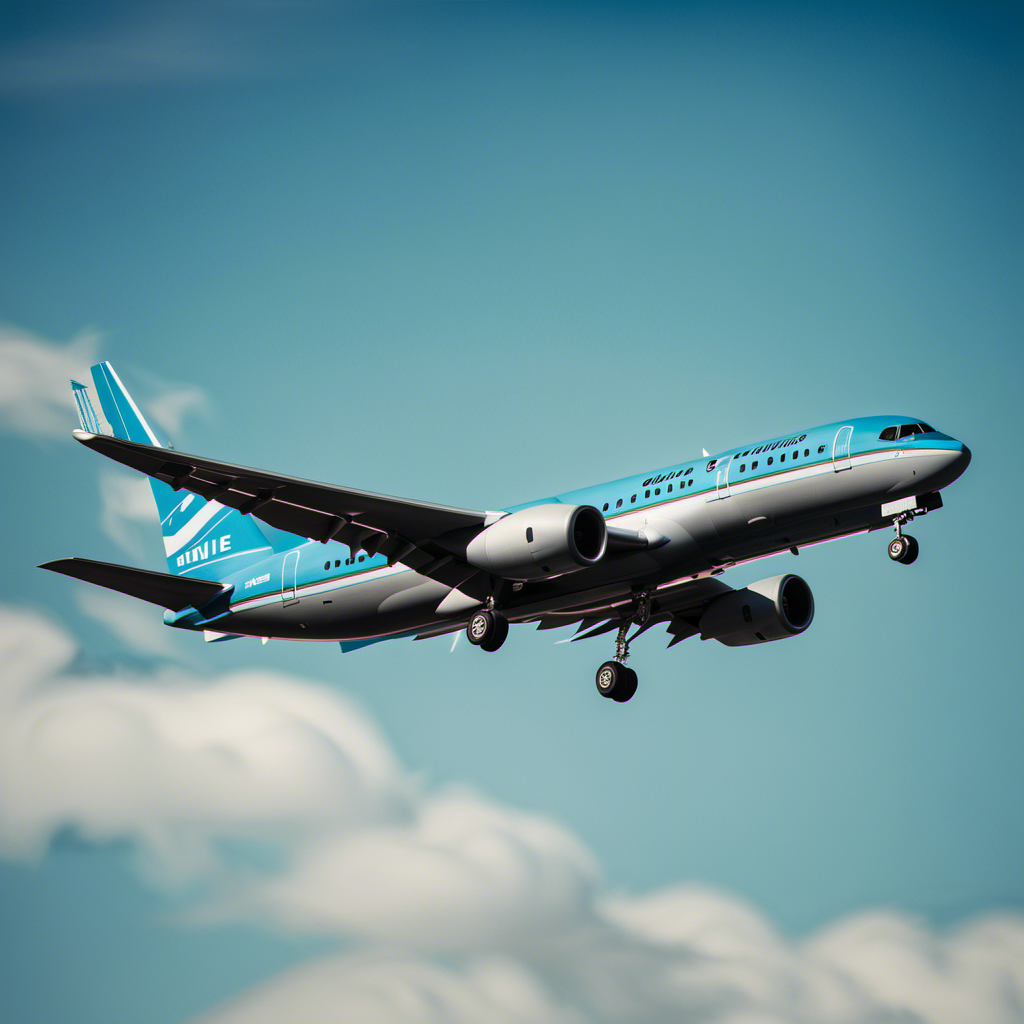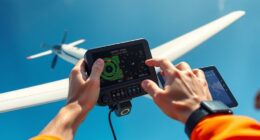I’ve always been fascinated by **gliders** – they can glide through the air so smoothly without any need for an engine. If you want to learn more about these incredible flying machines and discover the secrets of their flight, keep reading!
Did you know that despite their graceful flight, gliders are not immune to turbulence? In fact, turbulence can pose significant challenges for glider pilots.
In this article, we will explore the effects of turbulence on gliders and discuss ways to mitigate the risks. Prepare to delve into the technical details and real-life stories that shed light on the intersection of gliding and turbulence.
Key Takeaways
- Gliders can experience turbulence, which can disrupt airflow over their wings and result in a loss of lift.
- Turbulent air can create erratic movements, making it challenging to control a glider.
- Turbulence can cause sudden drops in altitude, depending on its intensity and duration.
- Unstable air conditions and atmospheric disturbances increase the risk of stall or spin, making it crucial for glider pilots to manage turbulence risks.
What is Gliding?
Gliders don’t have engines and rely on air currents to stay aloft. Gliding techniques are used to maximize the time and distance a glider can travel without the aid of an engine.
In gliding competitions, pilots showcase their skills by utilizing different techniques to navigate through the air. One common technique is ridge soaring, where gliders take advantage of wind blowing against a slope to gain altitude.
Another technique is thermal soaring, where pilots search for rising columns of warm air to gain altitude. These gliding techniques require precise control and a deep understanding of the dynamics of the atmosphere.
Now, let’s explore how gliders stay in the air without the use of engines.
How Gliders Stay in the Air
Despite not having an engine, gliders are able to stay in the air by utilizing rising air currents called thermals. These thermals are created when the sun heats the ground, causing the air to rise. Gliders take advantage of these thermals by circling within them, gaining altitude and staying afloat.
Glider aerodynamics play a crucial role in this process. The wings of a glider are designed to generate lift, which counteracts the force of gravity. The shape of the wings, along with the angle of attack and airspeed, determines the amount of lift produced. Additionally, the weight and balance of the glider must be carefully managed to maintain stability and control.
Understanding the principles of glider aerodynamics is essential for safely navigating the skies.
Now, let’s delve into the topic of understanding turbulence.
Understanding Turbulence
To better understand turbulence, you’ll need to familiarize yourself with the various factors that contribute to its occurrence and intensity. When it comes to glider safety and turbulence analysis, there are three main factors to consider:
-
Atmospheric Conditions: The presence of wind shear, temperature inversions, and unstable air masses can all contribute to the formation of turbulence. These conditions can create pockets of turbulent air that can pose a risk to gliders.
-
Terrain: The type of terrain over which a glider is flying can also influence the occurrence and intensity of turbulence. Mountainous areas, for example, can cause the air to flow in complex patterns, leading to turbulence.
-
Aircraft Interactions: The shape and design of the glider can interact with the surrounding air and create turbulence. Factors such as wing loading, wingtip design, and control surface effectiveness can all impact the level of turbulence experienced by a glider.
Understanding these factors is crucial in analyzing the potential effects of turbulence on gliders. As we explore the impact of turbulence on gliders, it becomes evident that the safety of glider pilots is directly affected by these turbulent conditions.
Effects of Turbulence on Gliders
When it comes to the effects of turbulence on gliders, there are three key points to consider: loss of lift, unpredictable air movements, and an increased risk of stall or spin.
Turbulence can disrupt the smooth flow of air over the wings, leading to a decrease in lift and potential loss of altitude.
Additionally, the turbulent air can create sudden and erratic movements, making it difficult for glider pilots to maintain control and stability.
Loss of Lift
Gliders can experience a loss of lift when encountering turbulent air. The turbulence disrupts the smooth flow of air over the wings, causing the glider to lose altitude. This loss of lift occurs due to changes in the aerodynamic forces acting on the glider.
Turbulence creates pockets of high and low-pressure air, causing the airflow to become unsteady. As a result, the glider’s wings may experience a sudden decrease in lift, leading to a loss of altitude. The severity of the loss depends on the intensity and duration of the turbulence.
Understanding the effects of turbulence on lift is crucial for glider pilots to anticipate and react to unpredictable air movements, ensuring safe and controlled flight.
Moving forward, let’s delve into the next section about these unpredictable air movements.
Unpredictable Air Movements
During a glider flight, the loss of lift can lead to a sudden drop in altitude and a potential emergency situation. However, another factor that can significantly impact glider flights is the unpredictable air movements caused by unstable air and atmospheric disturbances. These disturbances can create pockets of turbulence, which can be challenging to navigate and control. To better understand these unpredictable air movements, let’s examine the following table that illustrates common atmospheric disturbances and their effects on glider flights:
| Atmospheric Disturbance | Effect on Glider Flights |
|---|---|
| Thermal | Updrafts and downdrafts |
| Mountain Wave | Strong vertical currents |
| Lee Waves | Turbulence and rotor |
| Frontal Systems | Changing wind direction |
These unstable air conditions and atmospheric disturbances increase the risk of stall or spin, which will be discussed in the subsequent section.
Increased Risk of Stall or Spin
The increased risk of stall or spin in glider flights can be caused by unstable air conditions and atmospheric disturbances. These factors can create turbulence, which poses a significant challenge for pilots. To effectively manage this risk, it is crucial to understand the aerodynamic principles at play. Here are some key points to consider:
- Turbulence can lead to sudden changes in lift and drag forces, affecting the glider’s stability.
- Unpredictable updrafts and downdrafts can cause rapid altitude changes, increasing the risk of stalling.
- Wind shear, a sudden change in wind direction or speed, can induce a spin if not properly managed.
- Atmospheric disturbances like thermals and convective currents can intensify turbulence and create hazardous flying conditions.
By recognizing these factors and applying appropriate risk management techniques, pilots can mitigate turbulence risks and ensure safer glider flights.
Transitioning to the subsequent section, let’s explore effective strategies for managing turbulence in the air.
Mitigating Turbulence Risks
To reduce turbulence risks, you should make sure to follow proper weather monitoring and planning procedures. Glider safety depends on accurate assessment of weather conditions and understanding the potential for turbulence. Before each flight, it is crucial to consult weather forecasts and obtain updates from experienced glider pilots.
Identifying areas prone to turbulence, such as near mountains or during changes in weather patterns, is essential. It is also important to understand the signs of turbulence, such as sudden changes in airspeed or altitude, and take appropriate actions to avoid it. This may include adjusting the flight path, changing altitude, or even rerouting to avoid turbulent areas.
By implementing effective turbulence avoidance techniques, glider pilots can significantly enhance their safety during flights.
Transitioning into turbulence training for glider pilots, let’s explore the methods for recognizing and managing turbulence.
Turbulence Training for Glider Pilots
As a glider pilot, you’ll learn effective techniques for recognizing and managing turbulence in your training. Turbulence avoidance is a crucial skill that can help you navigate through challenging flying conditions. By analyzing the weather conditions and understanding the dynamics of turbulence, you can make informed decisions to avoid areas with high turbulence intensity.
Here are three key points to keep in mind:
-
Stay informed: Regularly check weather reports and forecasts to identify potential areas of turbulence.
-
Plan your route: Use turbulence analysis tools to identify regions with higher turbulence probability and plan your flight path accordingly.
-
Maintain situational awareness: Continually assess the current conditions during your flight and be prepared to adapt your route if necessary.
By implementing these techniques, you can enhance your ability to avoid turbulence and ensure a safer and more enjoyable flying experience.
Now, let’s move on to preparing for turbulence.
Preparing for Turbulence
When it comes to preparing for turbulence, two key factors to consider are weather forecasting and planning, as well as having the right safety equipment and procedures in place.
Weather forecasting and planning allows me to stay informed about potential turbulence conditions and make informed decisions about my flight route.
Additionally, having the proper safety equipment and procedures ensures that I am well-prepared to handle any unexpected turbulence that may arise during my flight.
Weather Forecasting and Planning
The weather forecast doesn’t look good for glider pilots today. As a glider pilot myself, I understand the importance of accurate weather forecasting and planning. It is crucial to have access to reliable weather information to ensure a safe and enjoyable flight.
Weather forecasting involves the use of various tools and techniques to predict atmospheric conditions, including temperature, wind speed, and cloud cover. This information helps us anticipate potential turbulence and plan our flights accordingly. Additionally, glider pilots undergo turbulence training to learn how to handle turbulent conditions and minimize risks.
By understanding weather patterns and being prepared for turbulence, we can make informed decisions and ensure our safety in the air.
Now, let’s transition into the next section and discuss the importance of safety equipment and procedures in glider flying.
Safety Equipment and Procedures
One important aspect of glider flying is ensuring that pilots are equipped with the necessary safety gear and follow proper procedures. Safety measures are crucial to mitigate potential risks and ensure a safe flight. Here are three key safety measures and emergency procedures that every glider pilot should be aware of:
-
Pre-flight checks: Before taking off, pilots must perform thorough inspections of the glider to ensure it is in optimal condition. This includes checking the control surfaces, landing gear, and instrumentation.
-
Emergency procedures: Pilots must be trained in emergency procedures such as how to handle an in-flight emergency, how to perform a forced landing, and how to handle equipment malfunctions.
-
Safety equipment: Glider pilots should always have safety equipment on board, including a parachute, a first aid kit, and a fire extinguisher.
By following these safety measures and being prepared for emergencies, glider pilots can minimize risks and ensure a safe flying experience.
Now, let’s delve into expert tips for dealing with turbulence.
Expert Tips for Dealing with Turbulence
If you’re feeling nervous about turbulence while gliding, take a deep breath and remember that it’s a normal part of flying. Dealing with anxiety during turbulence is crucial for managing passenger comfort.
As an experienced pilot, I have some expert tips to help you navigate through this challenging situation.
First, it’s essential to communicate with your passengers, reassuring them that turbulence is common and that the glider is designed to handle it.
Second, encourage deep breathing exercises to help calm nerves. Additionally, maintaining a smooth and steady flight path can minimize the effects of turbulence.
Finally, it’s essential to stay informed about weather conditions and avoid areas with known turbulence.
By following these tips, you can ensure a more comfortable gliding experience for both you and your passengers.
Now, let’s dive into some real-life stories of glider encounters with turbulence.
Real-Life Stories of Glider Encounters with Turbulence
In the world of gliding, you’ll hear some jaw-dropping stories about encounters with turbulence that will make your heart race. Glider pilots often face unexpected pockets of turbulence during their flights, which can pose safety risks if not managed properly.
One pilot I spoke to described a particularly intense experience when flying through a mountain wave. The glider was tossed around violently, and the pilot had to use all their skills to maintain control.
Another pilot recounted encountering severe turbulence near a thunderstorm, where the glider was buffeted by strong updrafts and downdrafts.
These real-life stories highlight the importance of glider safety and the need for pilots to be prepared for turbulence.
As we look to the future of gliding and turbulence research, advancements in technology and improved forecasting models will undoubtedly play a significant role in enhancing the safety of glider flights.
The Future of Gliding and Turbulence Research
As you look ahead to the future of gliding and turbulence research, you’ll find that advancements in technology and improved forecasting models will undoubtedly play a significant role in enhancing the safety of your flights. The future holds promising developments in turbulence prediction, offering glider pilots invaluable tools to mitigate the risks associated with turbulent conditions.
Here are a few key advancements to anticipate:
- More accurate weather forecasting models, providing real-time data on turbulence intensity and location.
- Advanced turbulence detection systems installed in gliders, offering instant alerts and guidance to avoid turbulent areas.
- Improved flight control systems, allowing pilots to make precise adjustments based on real-time turbulence data.
- Enhanced training programs that focus on recognizing and responding to turbulence, ensuring pilots are better equipped to handle challenging conditions.
With these future advancements, glider pilots can confidently navigate the skies, knowing that they have the tools and knowledge to anticipate and mitigate the effects of turbulence.
Moving forward, let’s explore the conclusion and final thoughts on gliding and turbulence.
Conclusion and Final Thoughts
As we conclude our exploration into the future of gliding and turbulence research, it is clear that advancements in technology and our understanding of atmospheric dynamics will continue to shape the safety and efficiency of glider operations. While turbulence is an inherent risk in aviation, glider pilots can effectively manage it through careful planning and situational awareness. By utilizing weather forecasts, pilot reports, and onboard instruments, they can make informed decisions to avoid areas of severe turbulence. Additionally, glider design and construction can be further optimized to enhance stability and reduce the effects of turbulence. Regular training and proficiency checks for glider pilots are crucial in ensuring their ability to handle turbulent conditions. Ultimately, the goal is to strike a balance between pushing the boundaries of gliding performance and prioritizing glider safety in the face of turbulence.
To summarize the key points discussed throughout this topic, I have created a table showcasing the future of gliding and turbulence research:
| Aspect | Future Developments |
|---|---|
| Technology | Improved weather forecasting systems, advanced onboard instruments for turbulence detection |
| Training | Enhanced pilot training programs, simulation-based training for turbulence scenarios |
| Glider Design | Optimized aerodynamics for improved stability, structural reinforcements for turbulence resistance |
| Safety Measures | Enhanced pilot reporting systems, standardized turbulence avoidance procedures |
Frequently Asked Questions
Can gliders fly in any type of weather?
Gliders are not designed to handle storms or bad weather. They lack engines and rely on rising air currents for lift. In turbulent conditions, gliders can be unstable and difficult to control, posing a safety risk.
How does turbulence affect glider performance?
Turbulence significantly affects glider performance. Studies show that even moderate turbulence can reduce glide efficiency by up to 30%. This impacts speed, stability, and maneuverability, making it crucial for glider pilots to anticipate and adjust accordingly.
Are gliders more prone to turbulence than powered aircraft?
Glider safety is impacted by weather conditions, including turbulence. Gliders are more prone to turbulence compared to powered aircraft. Turbulence can affect glider performance, making it important for glider pilots to be skilled in managing turbulent conditions.
Is turbulence more dangerous for glider pilots compared to commercial airline pilots?
Turbulence impacts on glider flight can be more dangerous for glider pilots compared to commercial airline pilots. Gliders are more vulnerable to turbulence due to their lightweight and lack of engine power. Mitigating turbulence risks is crucial for glider pilots to ensure safe flying.
Are there any specific strategies or techniques glider pilots can use to minimize the impact of turbulence?
To minimize turbulence impact, glider pilots employ various strategies and techniques. These include adjusting airspeed, selecting smoother routes, utilizing weight-shift control, and employing advanced weather forecasting tools. These strategies enhance safety and ensure a smoother flight experience.
Conclusion
In conclusion, gliders do encounter turbulence during their flights. This natural phenomenon can have various effects on gliders. These effects include loss of control and increased stress on the aircraft. However, glider pilots can mitigate the risks associated with turbulence with proper training and techniques. It is crucial for pilots to stay vigilant and be prepared for unexpected turbulence encounters.
While advancements in research continue to improve our understanding of turbulence and its impact on gliders, the future of gliding looks promising. However, occasional exhilarating bouts of turbulence are to be expected.
With a heart that soars as high as the skies, Aria, affectionately known as “Skylark,” is the driving force behind Soaring Skyways. Her journey into the gliding world began as a young dreamer gazing up at the soaring birds, yearning to experience the weightlessness and freedom they embodied. With years of experience both in the cockpit and behind the scenes, Aria’s commitment to the gliding community is unwavering.










